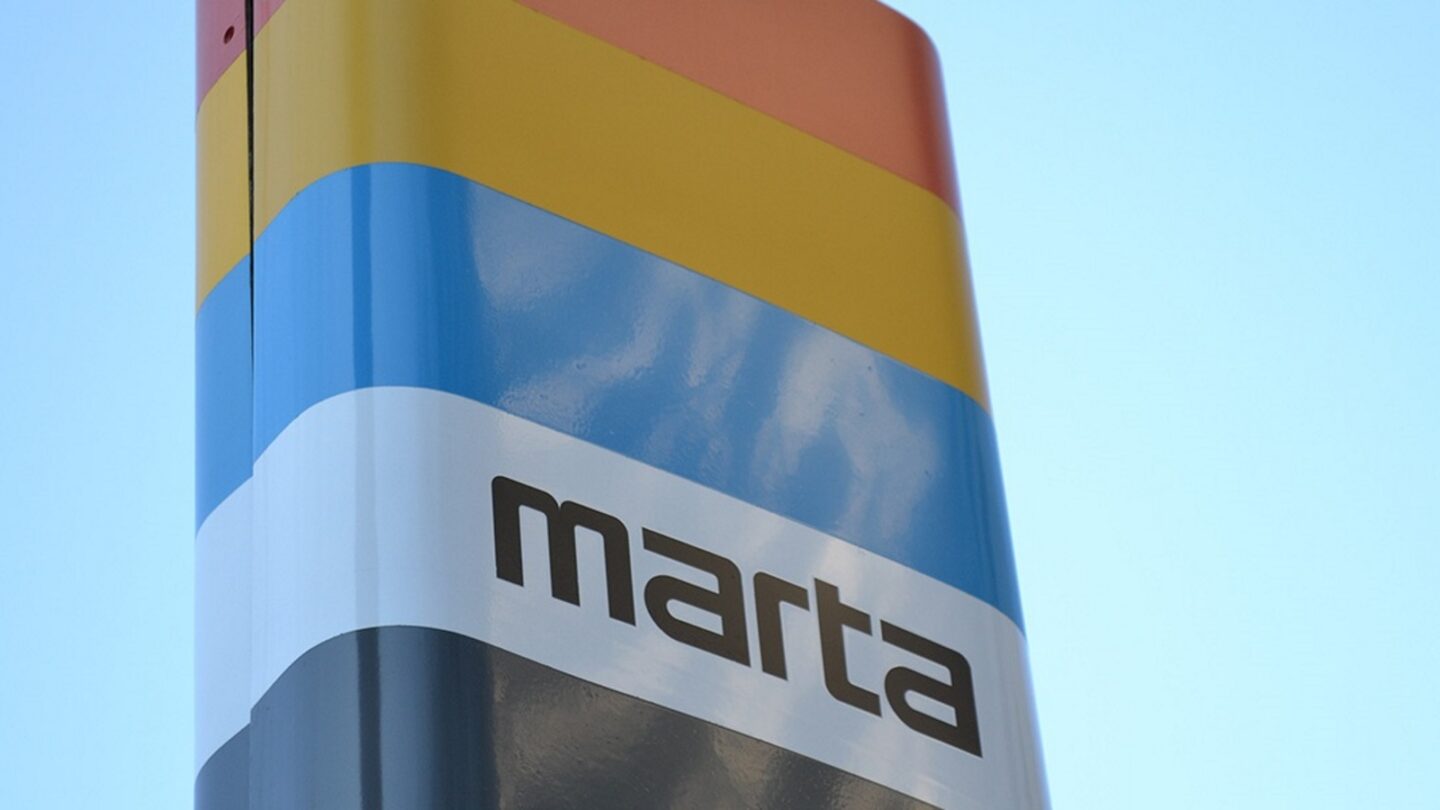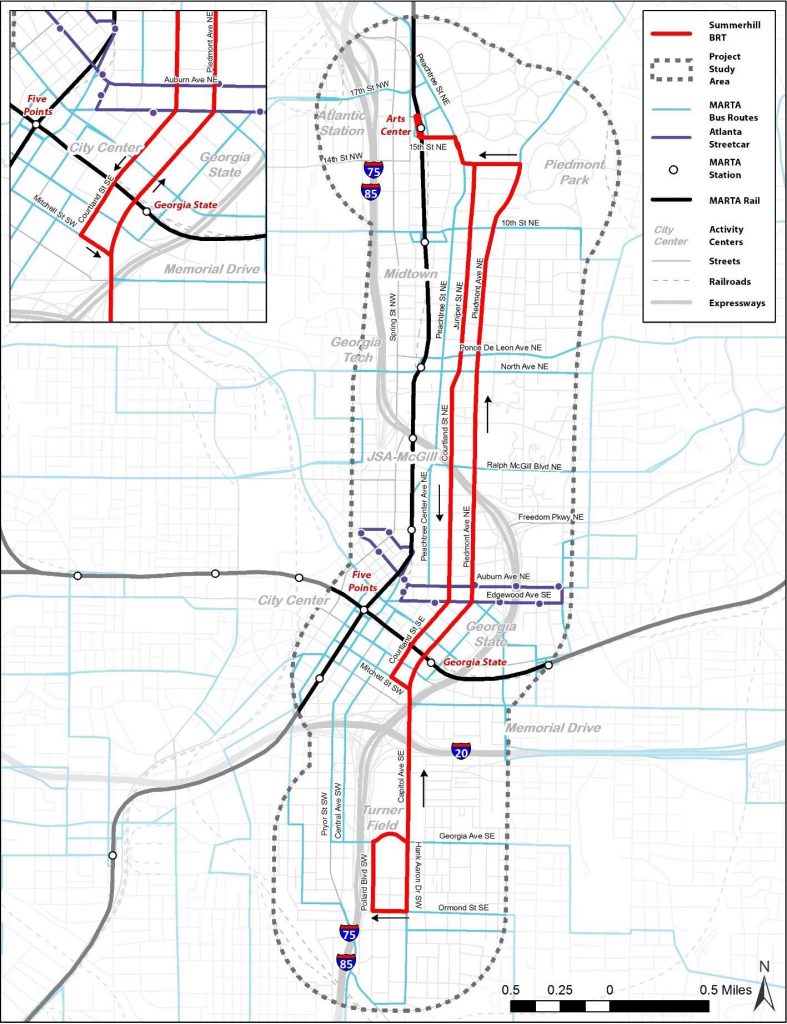Questions Raised About MARTA’s New Bus Rapid Transit Project

The planned Atlanta bus service stretches from Midtown to the new Georgia State Stadium. Last month, MARTA revealed the agency had won a federal TIGER grant for the project.
A new enhanced bus service is coming to the center of Atlanta, stretching from Midtown to the new Georgia State Stadium.
It was announced last month, when MARTA revealed the agency had won a federal TIGER grant for the project. The bus rapid transit will be the first of its kind in Georgia.
But instead of celebrating, some transit advocates, like Lauren Welsh, have been scratching their heads. Before she explains the problem, she starts with a disclaimer.
“No one can really be upset about receiving $12.6 million in federal funding for transit,” said Welsh, who is part of an urbanist group called Thread ATL.
What makes her upset about this project is that it also uses local funding, about $35 million. And no one asked the public about it.
“People have never heard of this [bus rapid transit] line. They don’t know where it came from and why it’s even going in,” Welsh said.
Even more, she said, the local money for this bus comes from two sales taxes voters approved back in 2016.

The project is slated to take $30 million from the Transportation Special Purpose Option Sales Tax, or T-SPLOST, and another several million from the MARTA expansion sales tax.
But Welsh said both of those sources were supposed to fund a whole list of other transit and infrastructure projects, which the public already vetted.
“I do want to point out, though, that we are in the very early planning stages,” said Ben Limmer, MARTA’s assistant general manager.
Limmer said MARTA developed this specific project idea shortly after the federal grant opportunity was announced in September 2017.
Unlike other expansion projects that city residents have supported, the cost of the downtown bus rapid transit was within the scope of the federal money available — $500 million nationwide.
But Limmer stressed that MARTA still has to fill in the details of the route. For example, bus rapid transit typically has dedicated lanes and the agency has to figure out where those will go.
“So there’s a substantial amount of public outreach in front of us. It’s a conversation we look forward to having,” Limmer said.
Others interested in more conversation include the Midtown Alliance, an organization of business and community leaders focused on improving the neighborhood. The group said it only learned of the bus after the grant application.
That’s even though the Midtown Alliance has advanced plans to redesign Juniper Street in the same corridor, making it more pedestrian- and bicycle-friendly.
City Council member Amir Farokhi, who represents Midtown, also said he has questions about the need for the bus route. The northern half runs parallel to the MARTA rail line.
He expects the City Council to get answers before it votes to authorize funding for the bus line. According to MARTA’s grant application, the bus isn’t set to start service until 2023 and 2024.
Of the more than 40 recipients of TIGER grant funding this year, Atlanta’s project was one of the few focused on transit.
CLARIFICATION: This story has been updated to provide more information about the Midtown Alliance.








